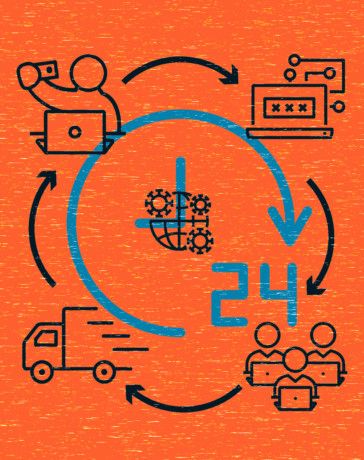
Big data has become a key differentiator in the ever more complex world of supply chain management. As the pandemic has shown, supply chains are particularly vulnerable to shocks. Now, businesses need to anticipate changing customer needs, strengthen supplier networks and be on top of logistics to respond quickly in a crisis.
The challenge is turning the growing volumes of information and data available into actionable insights to optimise performance and control risk. For humans with little more than spreadsheets to help, it is a huge job.
But with the power of self-service analytic platforms, chief finance officers are increasing savings, human resources specialists are optimising their talent pipelines, and chief marketing officers are responding to global shifts in supply and demand. In fact, knowledge workers of any discipline can upskill and learn these new techniques with ease, with the benefits flowing quickly to an organisation’s bottom-line.
Pre-empting demand
Predicting customer needs and reacting to them is key in an uncertain business environment, but too many firms lack the foresight needed. It will no longer do to make operation-critical decisions on the basis of instinct and opinion alone.
Data science and analytic tools can easily be utilised to mitigate risks of this kind of decision-making. By using population density information and current stock levels, companies are predicting which stores will have the highest demand at a given time. Companies are also anticipating demand shortfalls or high-demand items by interpreting data from known situations and running extensive simulations across a wide range of risk management scenarios.
Take for example Coca-Cola and its Freestyle touchscreen soda fountains found in restaurants across the US. The machines feature 165 different Coca-Cola drink products, as well as customised flavours, which can be mixed and individually dispensed.
This requires a large number of ingredients to be dispatched to vendors at short notice — and choosing the right volumes used to be tricky, often leading to waste.
Now, Coca-Cola has fixed the problem with analytics. Using telemetry, the machines send data back to the firm about what is selling well, and when. Coca-Cola then uses analytic workflows to compare those findings against a host of other variables and creates predictive models that anticipate demand to balance inventory.
What worked in the past may not count
Analytics offers firms a huge advantage, not just when tackling demand-side problems, but supply chain issues too. In times of crisis, firms need a complex, multi-tiered supplier structure in place to ensure they avoid costly stoppages. But faced with swathes of fast-moving and unstructured information, many fall back on old tools and techniques to inform their decision-making.
Using analytic forecasting tools, firms can gain a crucial edge. They can diversify their supplier base, so they are not reliant on a limited cadre of potentially high-risk players. Procurement functions are also empowered to assess the risks of using alternative suppliers so they can quickly identify a pre-approved part or make material substitutions.
Firms must have the right resources at the right time to tackle demand and keep costs down, and here too analytics can help. Take Toyota, which uses data analytics to find correlations between the logistics of moving parts and staff working patterns and matches them to customer needs. This empowers Toyota to accurately forecast labour for field service and improve part fulfilment and delivery times — all of which speed up its quarterly budget process.
Using data insights, the carmaker has realised time savings of nearly 500 hours per year during its budget process alone. In addition, it has been able to make faster and more cost-effective decisions and realised 7.5 per cent in labour cost savings by simply optimising the workforce.
Reshaping time to delivery
The process of moving goods around the world can be immensely complex. But without the power of data analytics, it is extremely difficult to a get a clear view of your global supply chain and offset unforeseen scenarios.
For example, as demand fluctuates, it’s crucial to be able to quickly analyse and secure additional freight capacity at short notice. Planners and buyers can then understand carrier options and optimise trade routes, as well parse data from geospatial sources — including real-time satellite positioning, tracking and geo-fencing — to give an overview of goods in transit.
Understanding where 100,000 trucks are moving raw or processed materials across continents can help tackle potential bottlenecks or reduce costly downtime. It can also help firms with just-in-time supply chains to locate alternative stockpiles of parts or raw materials in times of need.
For any business operating a supply chain, embracing the power of analytics to gain business insights from big data will be crucial. Without razor-sharp analytics, organisations risk being left behind in an increasingly unpredictable business environment. A smart approach to data now will protect supply chains, particularly at times of crisis, and guide the way to a successful future.
- Alan Jacobson is Chief Data and Analytics Officer, Alteryx.








